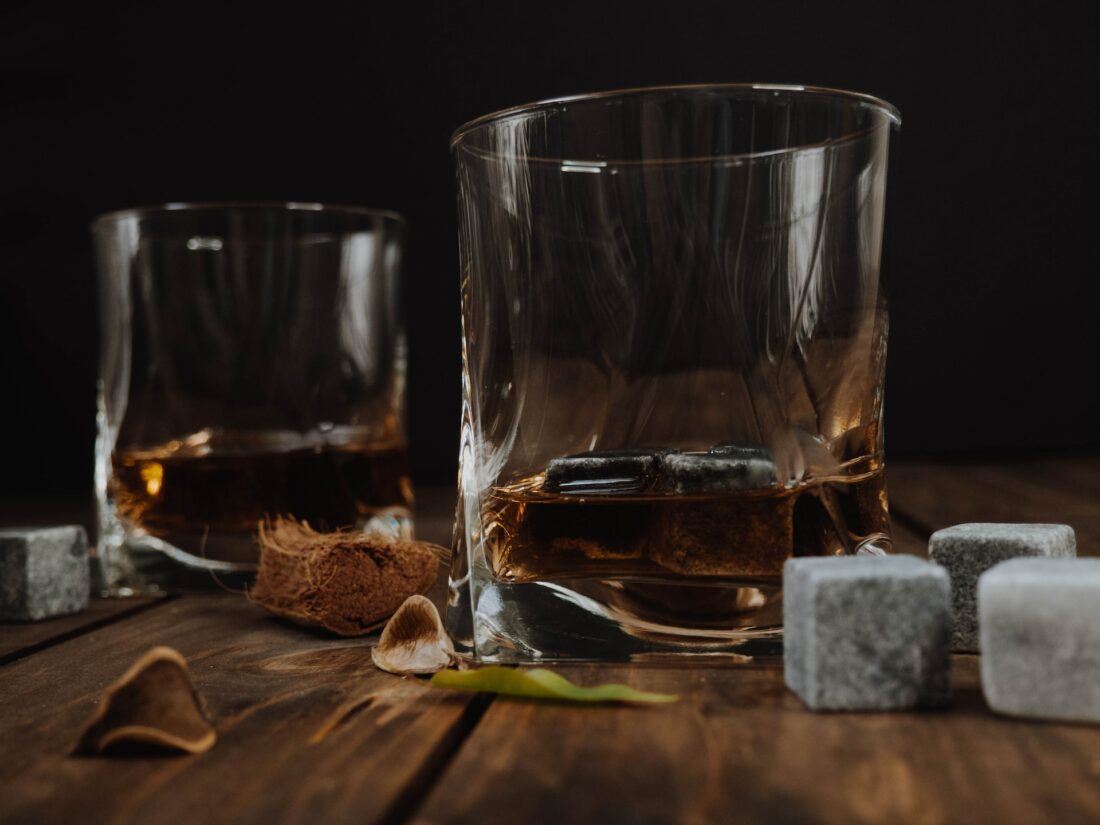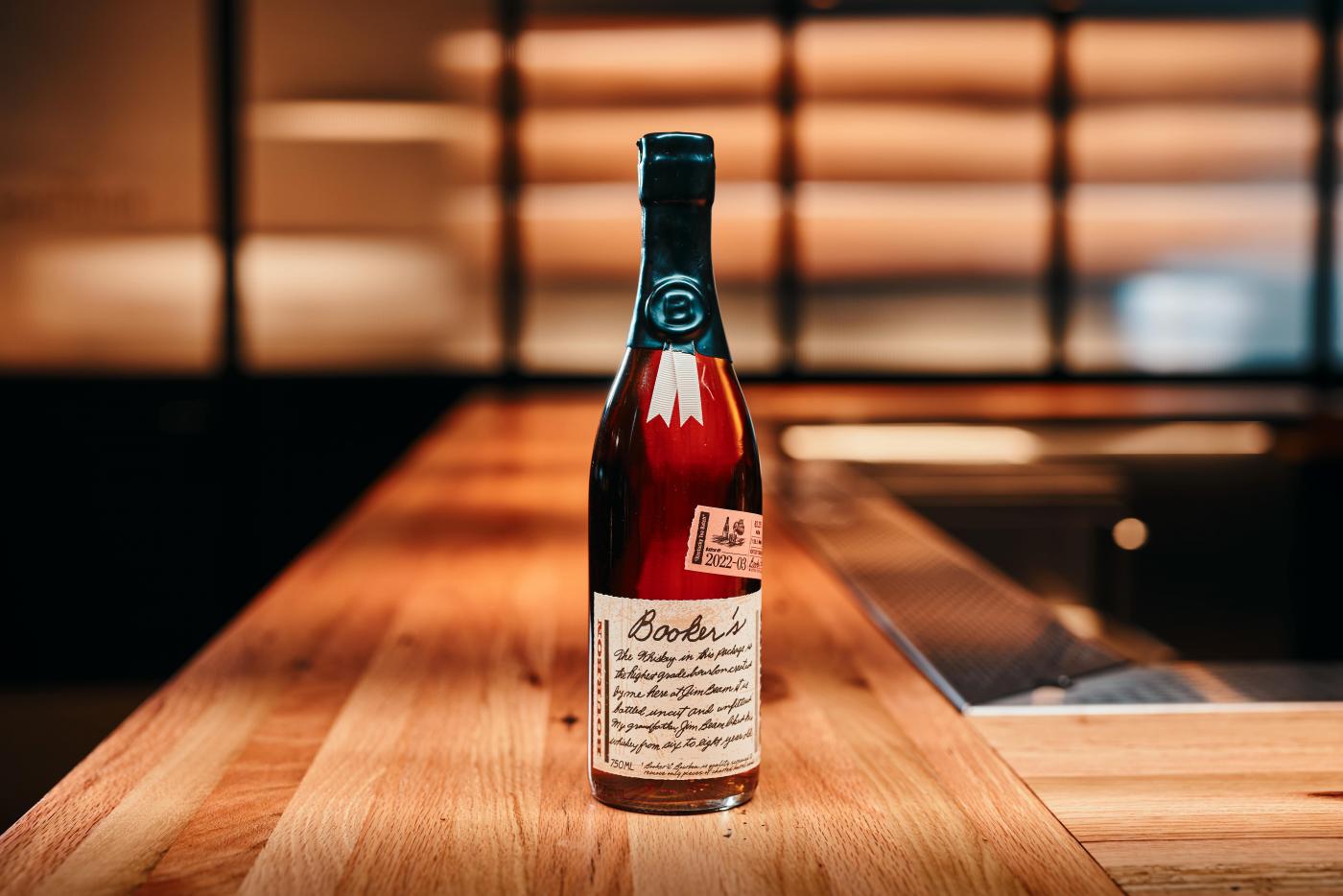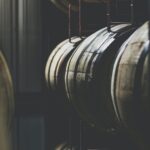
Barrel proof is a term commonly used in the whiskey world, but it might be confusing for those who are not familiar with it. Simply put, barrel proof refers to whiskey that has not been diluted with water before bottling. This means that the whiskey is bottled at the same proof as it was when it was taken out of the barrel.
Table of Contents
Understanding Barrel Proof
Barrel proof is a term used to describe the alcohol content of a distilled spirit, usually whiskey, that has not been diluted with water before bottling. It is also known as cask strength, and it can vary depending on the type of whiskey and the distillery producing it.
When whiskey is aged in oak barrels, the alcohol content can change due to the evaporation of water and other compounds. As a result, the alcohol content can increase or decrease, depending on the conditions of the aging process. Barrel proof whiskey is bottled at the same alcohol content as when it was removed from the barrel, without any dilution with water.
Barrel proof whiskey is usually more expensive than regular whiskey, as it is more concentrated and has a stronger flavor profile. It is also preferred by many whiskey enthusiasts, as it allows them to taste the full range of flavors and aromas present in the whiskey without any dilution.
It is important to note that barrel proof whiskey can be very strong, with an alcohol content of up to 140 proof or more. As a result, it should be consumed in moderation and with caution.
 photo credit: www.beamdistilling.com
photo credit: www.beamdistilling.com
Origins of Barrel Proof
Barrel proof whiskey has a long history dating back to the early days of American whiskey production. In the 1800s, bourbon was typically bottled at 40–50 proof. However, as the demand for higher-proof whiskey grew, distillers began to experiment with different methods of production.
One of the earliest methods was to bottle whiskey at the same time it came out of the barrel. This meant that the whiskey was not diluted with water before bottling, resulting in a higher alcohol content. This practice eventually became known as “barrel proof” or “barrel strength.”
Over time, the popularity of barrel proof whiskey waned as distillers began to focus more on consistency and standardization. However, in recent years, there has been a resurgence of interest in barrel proof whiskey among whiskey enthusiasts.
Today, many distilleries offer barrel proof versions of their whiskeys, which are highly sought after by collectors and connoisseurs. These whiskeys are often bottled at over 100 proof, and can sometimes reach as high as 140 proof or more.
Despite its popularity, barrel proof whiskey is not without its drawbacks. Because it is not diluted with water, it can be quite potent and may not be suitable for everyone. Additionally, some people find that the higher alcohol content can mask some of the subtler flavors and aromas present in the whiskey.
Process of Making Barrel Proof
The process of making barrel proof whiskey is quite simple. The whiskey is aged in barrels, and after a certain amount of time, it is tested to determine its alcohol content. If the alcohol content is high enough, the whiskey is bottled directly from the barrel without any dilution.
The process of making barrel proof whiskey starts with the selection of barrels. The barrels used for aging whiskey are typically made of oak, which imparts a unique flavor to the whiskey. The barrels are then filled with whiskey and stored in a warehouse to age. The length of time that the whiskey is aged in the barrel can vary depending on the desired flavor profile.
After the whiskey has been aged for a certain amount of time, it is tested to determine its alcohol content. This is done by taking a sample of the whiskey directly from the barrel and measuring its alcohol content. If the alcohol content is high enough, the whiskey is bottled directly from the barrel without any dilution.
Barrel proof whiskey is typically bottled at a higher alcohol content than regular whiskey. This is because the whiskey has not been diluted with water before bottling. The alcohol content of barrel proof whiskey can vary depending on the age of the whiskey and the type of barrel used for aging.
Significance in Whiskey Production
Barrel proof plays a crucial role in whiskey production. It affects the flavor, aroma, and color of the whiskey. The higher the proof, the more intense the flavor and aroma. Whiskey that is bottled at barrel proof is also more expensive than whiskey that has been diluted with water before bottling.
Barrel proof whiskey is typically aged longer than its diluted counterparts. This is because the higher proof slows down the aging process, allowing the whiskey to develop more complex flavors and aromas. The proof also affects the amount of evaporation that occurs during the aging process. A higher proof whiskey will evaporate more slowly, resulting in less loss due to evaporation.
The entry proof, or the proof of the whiskey when it is first put into the barrel, also plays a significant role in the final product. The legal barrel entry proof is 125, but most distillers do not exceed 110. Filling barrels at a high entry proof and then watering down after removing the whiskey from the barrel produces more volume of whiskey per barrel than barreling at a lower entry proof, which saves on barrel cost.
In addition to affecting the whiskey itself, the proof also affects the barrel. A higher proof whiskey will extract more flavor from the barrel, resulting in a darker color and a more intense flavor. However, it can also cause the barrel to break down more quickly, resulting in a shorter lifespan for the barrel.
Effects on Flavor and Texture
Barrel proof whiskey can have a significant impact on the flavor and texture of the final product. The higher alcohol content can intensify the flavors and aromas of the whiskey, resulting in a more complex and robust taste profile.
When whiskey is aged in a wooden barrel, it interacts with the wood and absorbs flavors from the wood. The higher alcohol content of barrel proof whiskey can extract more of these flavors from the wood, resulting in a more pronounced oak flavor. Additionally, the higher alcohol content can also bring out more subtle flavors that might not be present in lower proof whiskey.
The texture of barrel proof whiskey can also be affected by the higher alcohol content. The whiskey may have a thicker, oilier mouthfeel due to the higher concentration of alcohol. This can make the whiskey feel more substantial and luxurious on the palate.
However, the higher alcohol content can also result in a harsher, more intense burn when drinking the whiskey neat. Diluting the whiskey with water can help to mellow out the burn and bring out more of the flavors and aromas.
How to Enjoy Barrel Proof
Barrel proof whiskey is not for the faint of heart. It is a high-proof spirit that requires a bit of finesse to enjoy. Here are a few tips on how to enjoy barrel proof whiskey:
- Sip Slowly: Barrel proof whiskey is best enjoyed slowly. Take small sips and let the whiskey sit on your tongue for a few seconds before swallowing. This will allow you to fully appreciate the complex flavors and aromas.
- Add Water: Adding a few drops of water to your barrel proof whiskey can help to open up the flavors and aromas. The water will also help to reduce the alcohol burn and make the whiskey more palatable.
- Use a Glencairn Glass: A Glencairn glass is the perfect vessel for enjoying barrel proof whiskey. The wide bowl allows the whiskey to breathe and the narrow opening concentrates the aromas.
- Pair with Food: Barrel proof whiskey pairs well with rich, bold flavors. Try pairing it with a steak or a piece of dark chocolate to enhance the flavors of both the whiskey and the food.
- Experiment with Ice: While purists may frown upon adding ice to their whiskey, it can be a great way to enjoy barrel proof whiskey. The ice will help to dilute the whiskey and reduce the alcohol burn. Try experimenting with different types of ice, such as large cubes or crushed ice, to find your perfect serve.
Barrel Proof Vs. Other Whiskeys
One of the benefits of barrel proof whiskey is that it can provide a more intense flavor experience. Because it is not diluted, the flavors and aromas of the whiskey are more concentrated. This can be especially appealing to whiskey enthusiasts who enjoy the complexity of different flavors and aromas.
However, because barrel proof whiskey is not diluted, it can also be more challenging to drink for some people. The higher alcohol content can make it more potent and harsh, which can be overwhelming for some drinkers. That being said, many people enjoy the robust and intense flavor profile that barrel proof whiskey offers.
It’s important to note that not all whiskeys are available in barrel proof. Some distillers choose to only offer their whiskey in a diluted form. Additionally, some whiskeys are only available in small batches or as single barrels, which means that the alcohol content can vary from bottle to bottle.
Popular Barrel Proof Brands
There are many barrel proof brands available on the market, each with its own unique flavor profile and characteristics. Here are some of the most popular barrel proof brands:
Booker’s Bourbon
Booker’s Bourbon is a small batch bourbon that is bottled uncut and unfiltered at its natural proof. It is aged for six to eight years and has a rich and complex flavor profile. Booker’s Bourbon is known for its high alcohol content, which ranges from 121 to 130 proof.
Elijah Craig Barrel Proof
Elijah Craig Barrel Proof is a high-proof bourbon that is aged for 12 years. It is bottled uncut and unfiltered, which means that it retains its natural flavors and aromas. Elijah Craig Barrel Proof has a rich and intense flavor profile with notes of dark chocolate, caramel, and vanilla.
Stagg Jr.
Stagg Jr. is a barrel proof bourbon that is aged for eight to nine years. It is bottled uncut and unfiltered, which gives it a rich and intense flavor profile. Stagg Jr. has a high alcohol content, which ranges from 128.4 to 132.3 proof. It has a bold and complex flavor profile with notes of caramel, vanilla, and oak.
George T. Stagg
George T. Stagg is a barrel proof bourbon that is aged for 15 years. It is bottled uncut and unfiltered, which means that it retains its natural flavors and aromas. George T. Stagg has a high alcohol content, which ranges from 124.9 to 144.1 proof. It has a rich and complex flavor profile with notes of dark fruit, caramel, and oak.
Wild Turkey Rare Breed
Wild Turkey Rare Breed is a barrel proof bourbon that is aged for six to 12 years. It is bottled uncut and unfiltered, which means that it retains its natural flavors and aromas. Wild Turkey Rare Breed has a high alcohol content, which ranges from 112.8 to 116.8 proof. It has a bold and complex flavor profile with notes of caramel, vanilla, and oak.
Frequently Asked Questions
What is the difference between barrel proof and cask strength?
Barrel proof and cask strength are often used interchangeably, but there is a subtle difference. Barrel proof refers to the alcohol content of the whiskey when it is bottled, while cask strength refers to the alcohol content straight from the barrel before any dilution. In other words, barrel proof whiskey may have been diluted slightly before bottling, whereas cask strength whiskey is bottled directly from the barrel without any dilution.
What is the proof range for barrel proof whiskey?
The proof range for barrel proof whiskey varies, but it is generally between 100 and 140 proof. However, some barrel proof whiskeys can be as high as 150 proof or more.
What are some popular barrel proof whiskeys?
There are many popular barrel proof whiskeys available, including Booker’s, George T. Stagg, Elijah Craig Barrel Proof, and Wild Turkey Rare Breed.
What are the advantages of drinking barrel proof whiskey?
One advantage of drinking barrel proof whiskey is that it often has a more robust and complex flavor profile due to the higher alcohol content. Additionally, some people enjoy the full-bodied mouthfeel that comes with drinking a higher proof whiskey.
What are the disadvantages of drinking barrel proof whiskey?
One of the main disadvantages of drinking barrel proof whiskey is that it can be quite strong and overpowering for some people. The high alcohol content can also cause a burning sensation in the throat and stomach, and it can be easy to overindulge without realizing it.
Conclusion
Barrel proof is a term used to describe the strength of a distilled spirit, specifically bourbon. It refers to the alcohol content of the spirit, which is measured in terms of the amount of alcohol present in the spirit and is usually expressed as a percentage of alcohol by volume (ABV).
Barrel proof bourbon, however, means that the bourbon in the bottle has the same alcohol content as when it was put into the barrel for aging, usually 110+ proof. This is because most bourbon actually increases in proof while it’s aging due to evaporation within the barrel from Kentucky summers.
Related Posts
Here are some related posts that readers may find interesting. These posts provide additional information on various aspects of whiskey, including pricing, storage, counterfeiting, and quality. Readers who are interested in learning more about whiskey may find these posts informative and helpful:
- What Are the Texas Whiskey Prices? A Comprehensive Guide: This comprehensive guide provides information on the prices of various Texas whiskeys, including popular brands and distilleries.
- How Long Does an Unopened Bottle of Whiskey Last? A Guide to Shelf Life and Storage: This helpful guide explains how to properly store an unopened bottle of whiskey and provides information on the shelf life of different types of whiskey.
- Could this be the Solution Against Whisky Counterfeiting?: Counterfeiting is a major issue in the whiskey industry, and this post explores a potential solution to the problem.
- What Does Bottom Shelf Whiskey Mean? Explained.: This post explains what “bottom shelf” whiskey is and provides information on its quality and price.
- So Single Malts are actually Blends?: This informative post explores the concept of single malt whiskey and explains why it is considered a blend.



